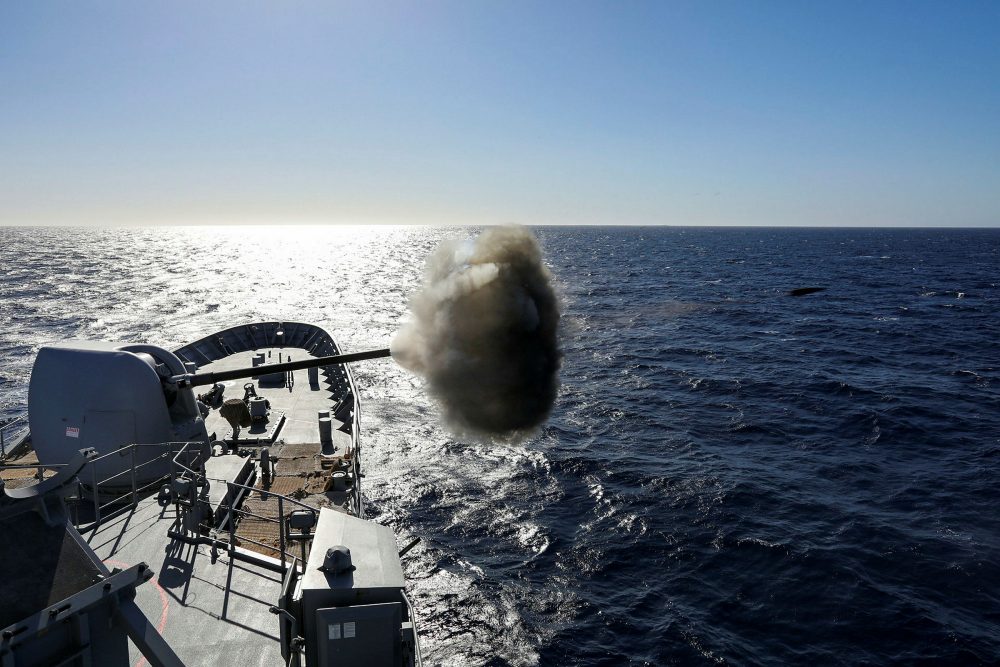
The war in Ukraine looks set to become protracted. Russia’s expected rapid victory has failed to materialise and the conflict is now well into a second phase of a Donbas campaign that is likely to last weeks if not longer.
One of the most dramatic moments of the conflict so far has been the sinking of the Russian Black Sea Fleet flagship, the Slava-class cruiser
Moskva, most likely by two Ukrainian shore-launched Neptune anti-ship missiles. The use of a TB-2 drone to distract the ship’s air-defence systems from the approaching missiles likely proved vital, but it’s also highly likely that the
Moskva’s air-defence systems were not well suited to countering low-flying, fast-moving anti-ship missiles.
It’s not surprising that the remaining Russian Navy units have redeployed further out to sea, beyond the range of the shore-based coastal defence cruise missiles operated by Ukraine.
It’s important not to read too much into the sinking of the
Moskva in terms of implying that naval surface combatants are now obsolete in the face of advanced missile systems. That’s certainly not the case. Naval surface combatants have been sunk in past conflicts by such weapons—the use of Exocet anti-ship missiles against the Royal Navy’s HMS
Sheffield during the 1982 Falklands War for example.
However, there should be some warning signs flashing at least amber for a business-as-usual approach to naval capability development, particularly for Indo-Pacific navies. Anti-ship missile systems are evolving to the point where a large attack on a naval taskforce will be increasingly difficult to defend against.
Because of that increasing threat, the trend in the development of naval surface forces seems to be heading towards larger, more complex and more expensive naval vessels, designed primarily to defend against such attacks, and defend a major capital asset such as an aircraft carrier, rather than deliver long-range offensive firepower. Their armament is in vertical launch system cells that can’t be reloaded at sea, so once the cells are empty, a warship is effectively defenceless and might as well return to port.
The use of lethal autonomous weapons and loitering munitions adds to the challenge facing naval surface forces. Advanced drones have comparable ranges to anti-ship missile systems, and can identify targets, deliver munitions, attack the target directly or even coordinate attacks by anti-ship missiles.
The combination of advanced drones and anti-ship missiles highlights the growing challenge for naval forces to survive in highly contested environments, such as that which would confront naval forces operating close to China.
For Indo-Pacific states, the combination of advanced anti-surface-warfare weapons comprising anti-ship missiles and loitering munitions, and a sophisticated sensor-to-shooter ‘kill chain’ is going to make it increasingly risky for naval forces to go in harm’s way in the western Pacific.
Rather than trying to defend a taskforce comprising a small number of large, complex and costly naval surface combatants, each with limited firepower against massed missile and drone swarms, a better solution for Indo-Pacific naval forces is to emphasise the development of larger numbers of smaller missile-armed naval vessels. These would operate either independently or in small squadrons, in a distributed and dispersed manner, taking full advantage of the archipelagic nature of the region’s geography, while relying on resilient and survivable sensor-to-shooter links to detect and attack an adversary.
This approach would also see Indo-Pacific navies invest in their own swarms of sensors on low-cost expendable drones and utilise loitering munitions as well as anti-ship missile systems that would be suitable for corvette-class vessels and, significantly, for autonomous surface vessels that could act as small arsenal ships that could launch missiles and loitering munitions. This approach recognises that quantity has a quality all its own.
Going from a navy that emphasises the large, few and expensive to the small, many and cheap is just part of the solution. The adversary’s sensor-to-shooter kill chain must be severed quickly in order to reduce the effectiveness of its anti-access and area-denial (A2/AD) capabilities, including its long-range systems such as anti-ship ballistic missiles.
By collapsing the adversary’s counter-intervention capability, more traditional naval forces, including large naval surface combatants, could then be deployed closer to allow for planned land-attack and anti-ship missile systems to be employed without risking the loss of the launching platform.
The Russians have demonstrated the ability to launch long-range land-attack missiles against Ukraine such as Kalibr, and this suggests a third lesson, with naval land-attack missions exploiting long-range fires, and in particular, hypersonic weapons.
But taking out an opponent’s ability to detect, track and target naval forces at sea is a crucial step. Had Ukraine not been able to target the
Moskva, it would still be afloat. Therefore, a battle of the first salvo in 21st century naval terms that could occur in space, in cyberspace and across the electromagnetic spectrum is the vital enabler for everything that follows.
This approach replicates at sea what Ukrainian forces are employing on land—small teams of fighters, using low-cost intelligence capabilities and rapid attacks that employ surprise and concentration of force at the right time and place to deliver lethal effect, and quick dispersal to avoid retaliation. It’s an asymmetric approach to naval operations in the Indo-Pacific that makes more sense than charging into the dragon’s domain and suffering the loss of major surface combatants.
 Print This Post
Print This Post